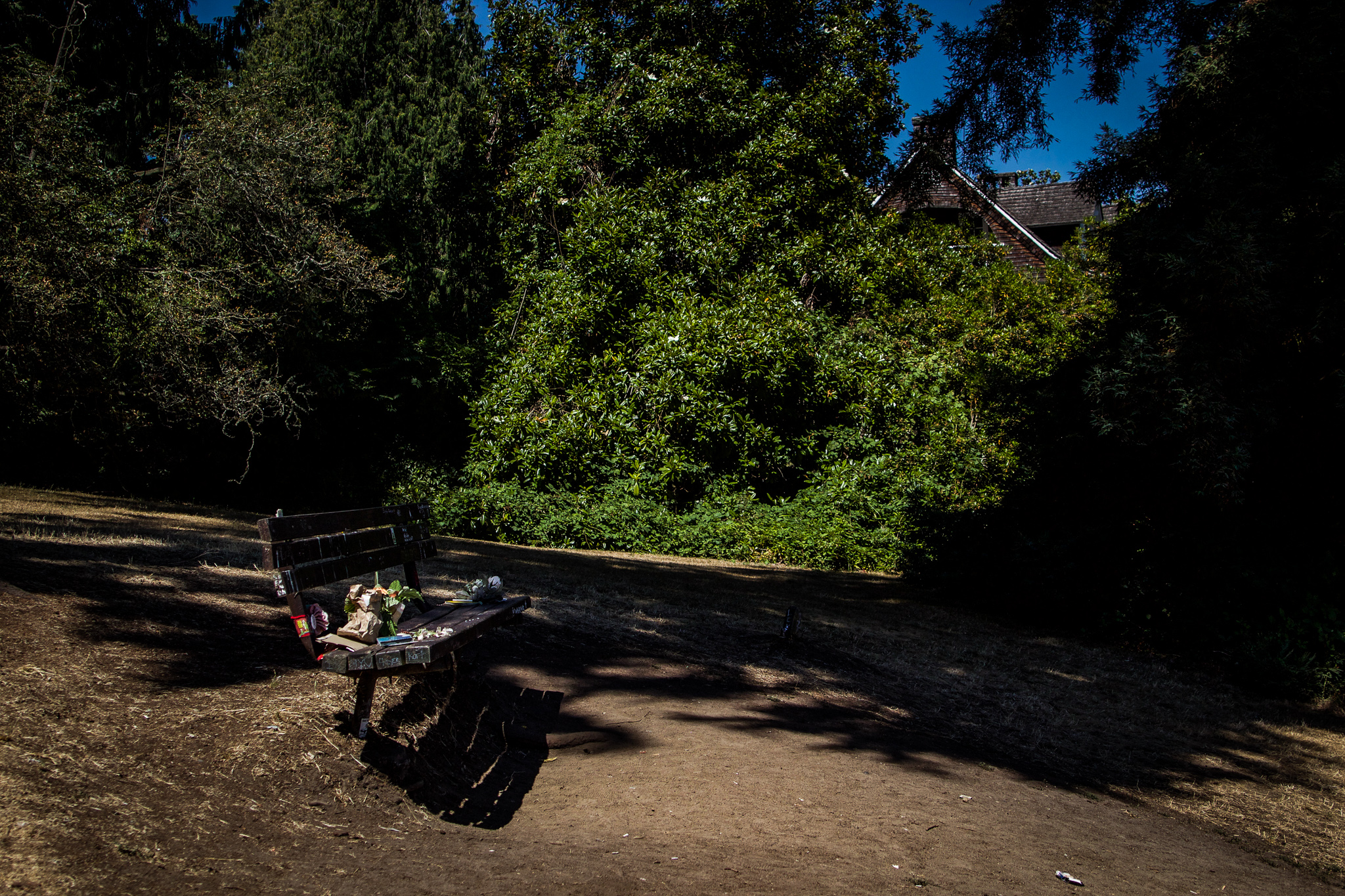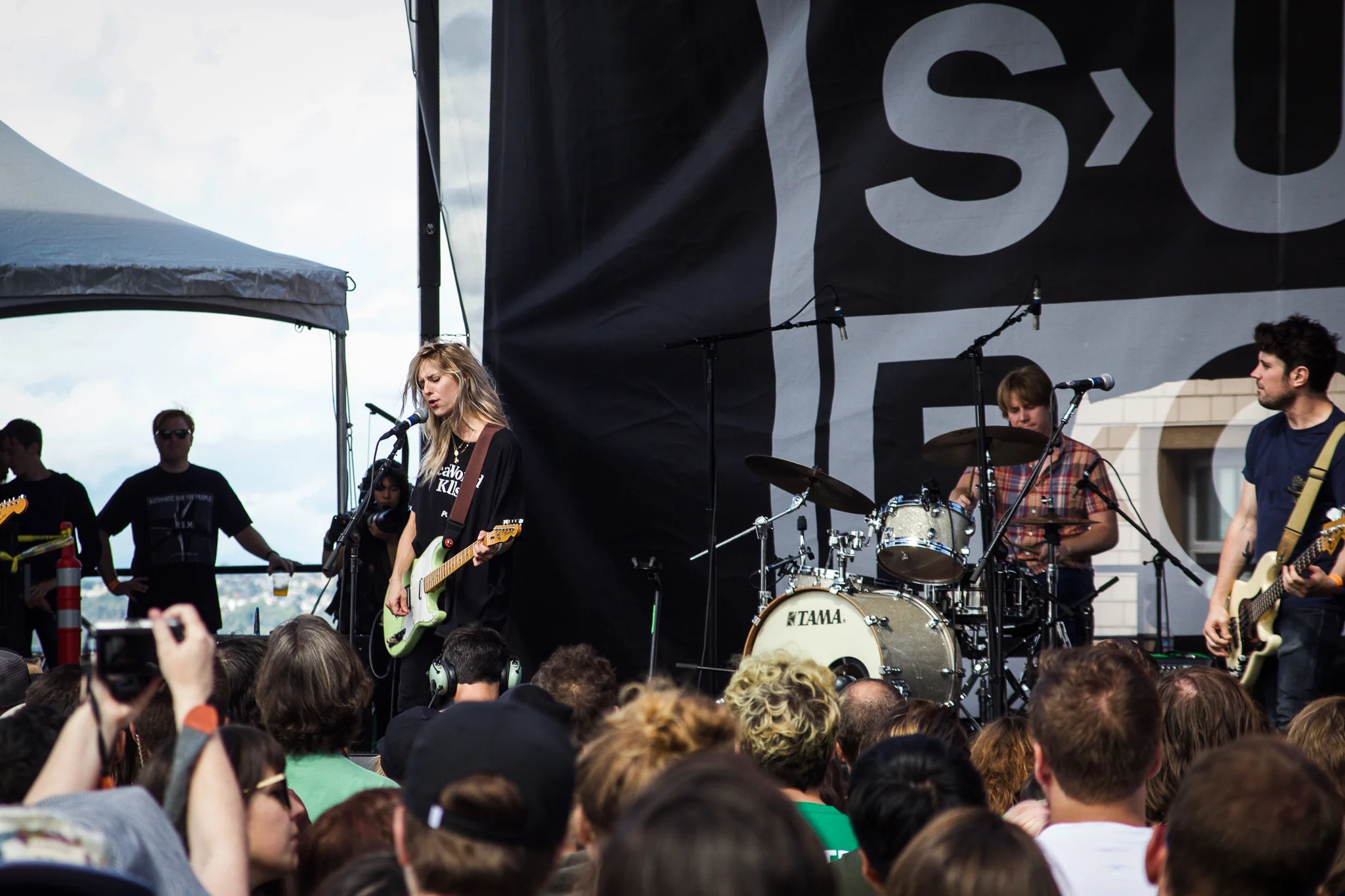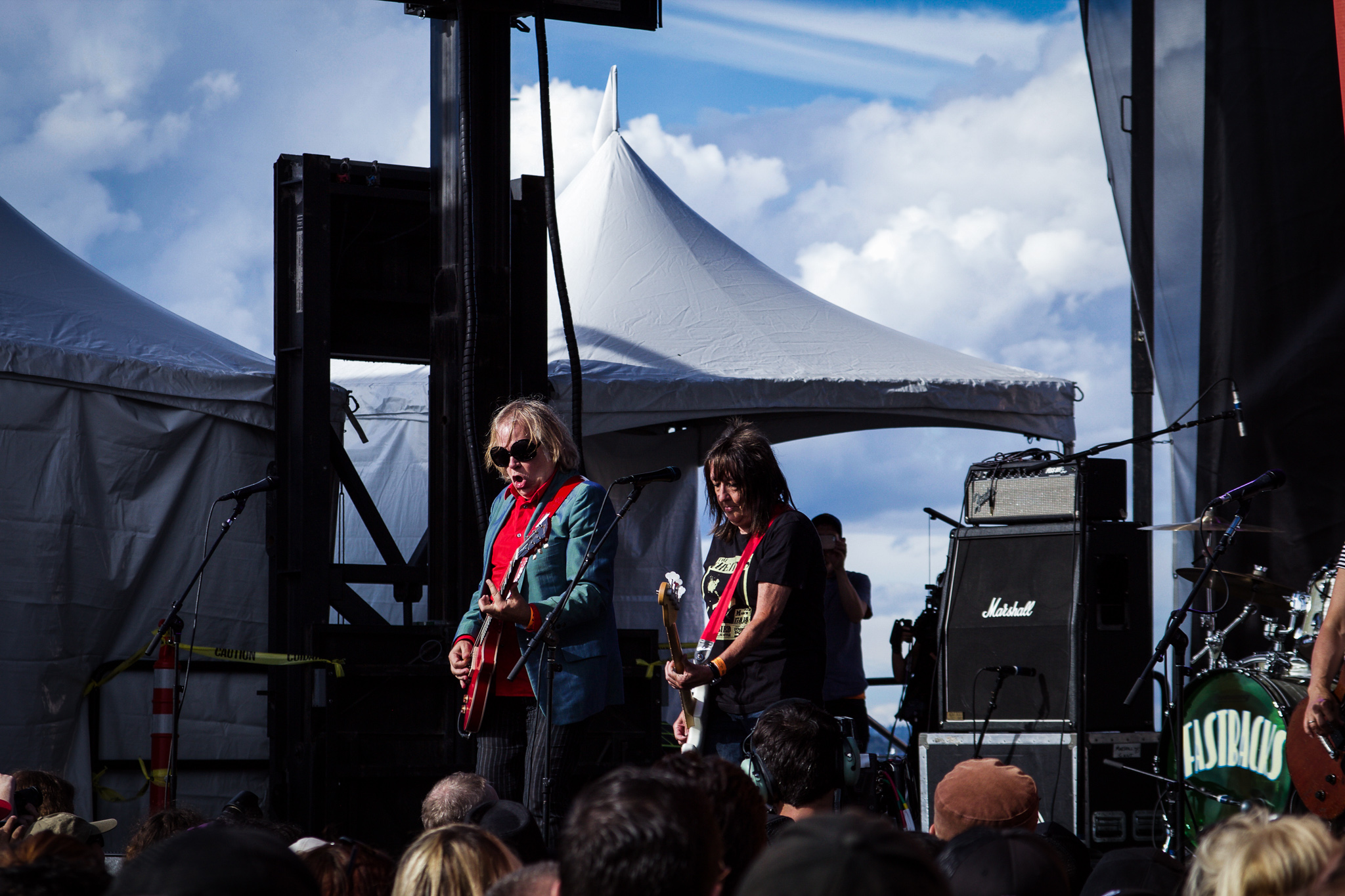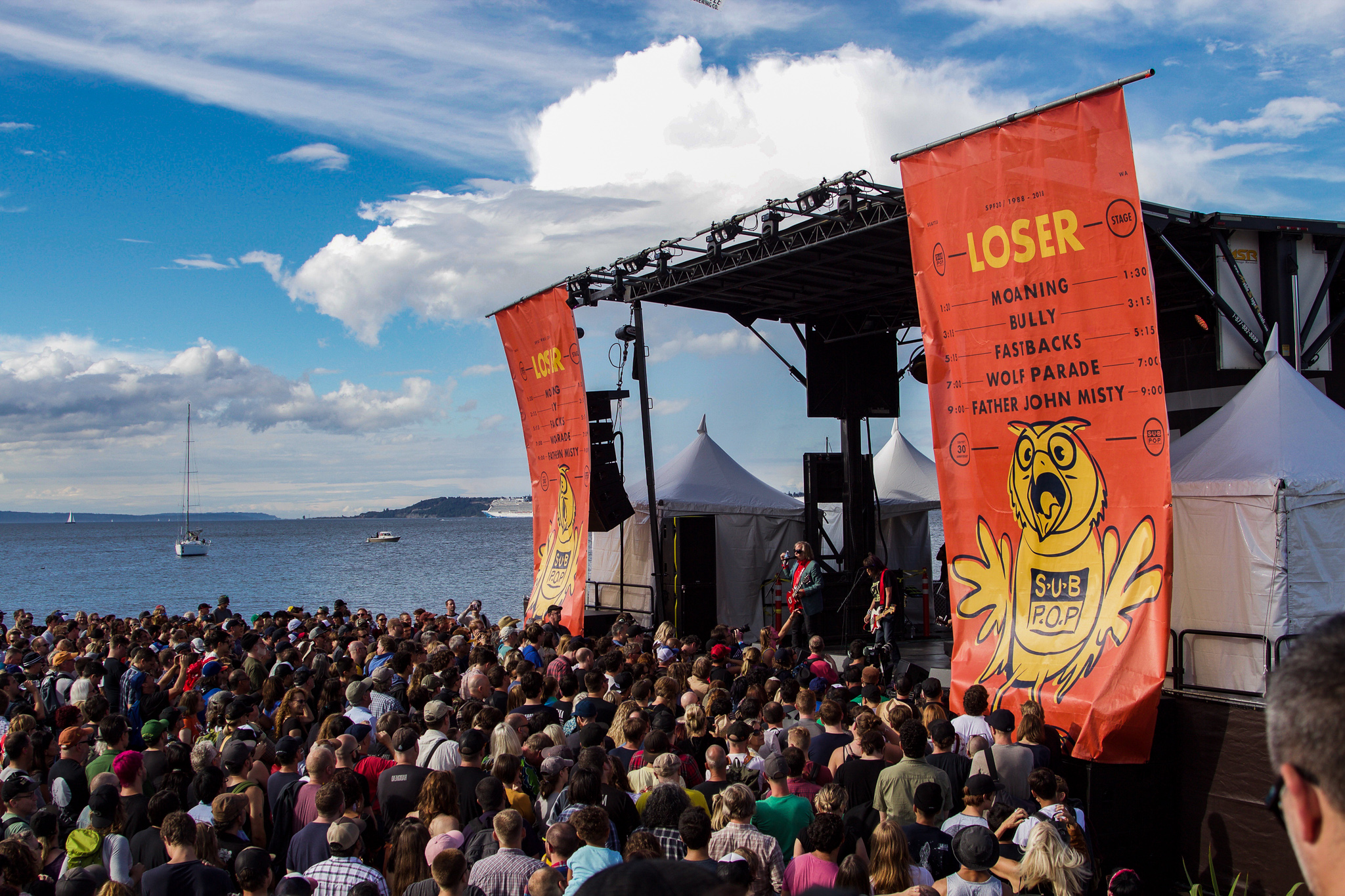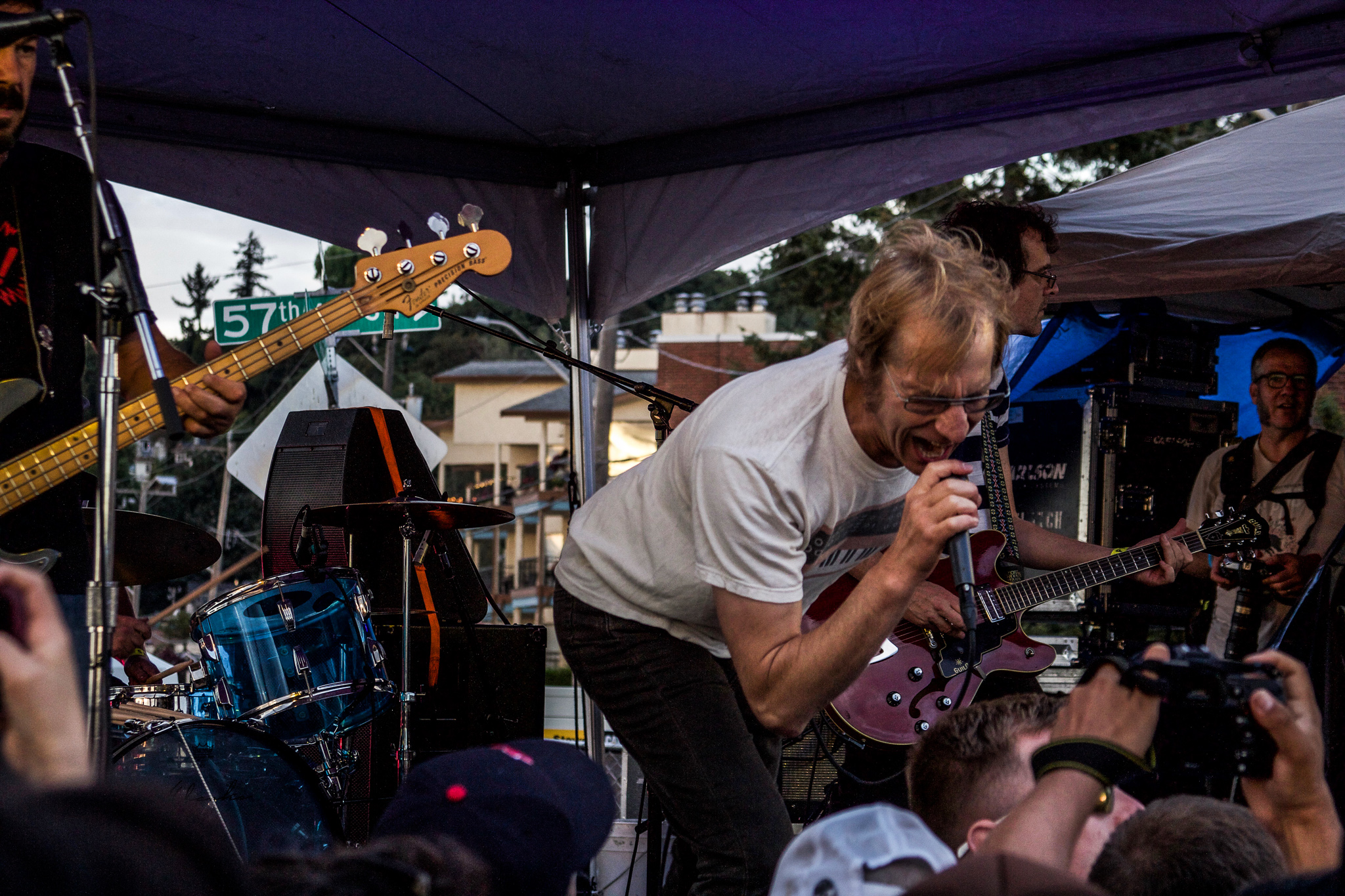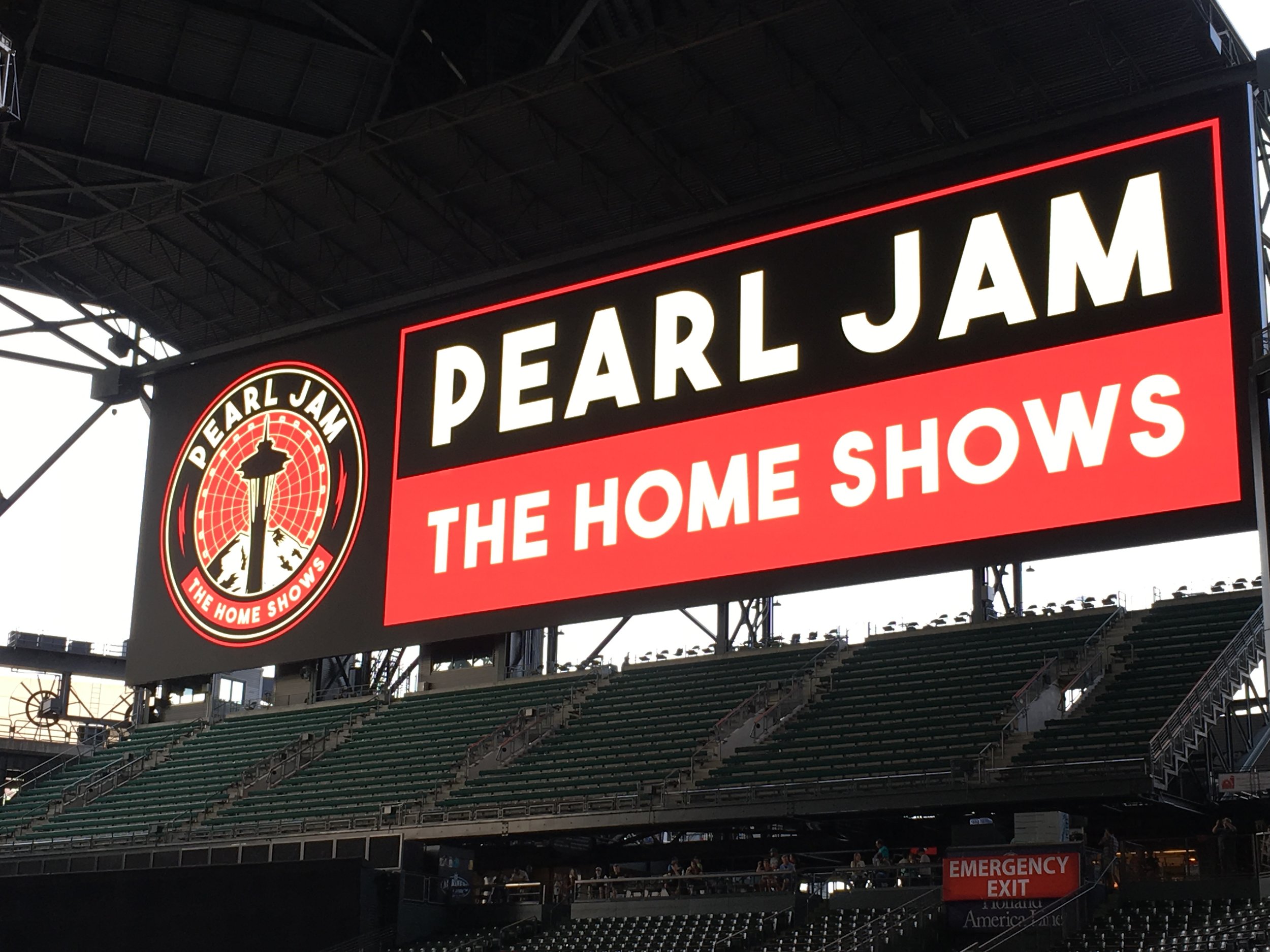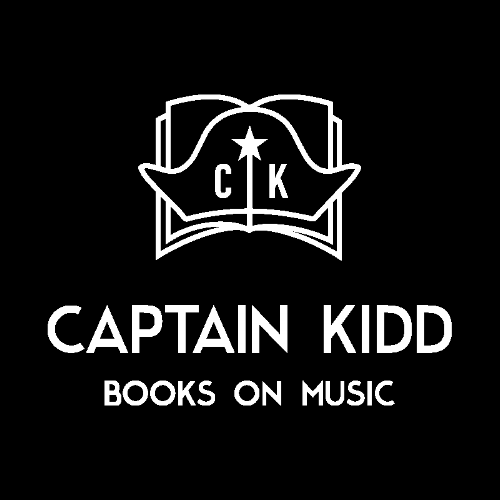Pearl Jam’s gigantic shows in support of fighting homelessness in their hometown, and a major beach party in celebration of Sub Pop’s 30th Anniversary, turned a changed Seattle upside down in the second week of August. Gaffa was there.
Words: Henrik Tuxen
Photo: Charlotte Mai Jacobsen
Grunge. For many years an epithets no one would be associated with, especially the bands that defined it. But time goes by, and many things looks different today. That includes the perception of the genre, and the need for the same, as well as Seattle, the city and area where everything started out in the late 80s. The movement went from a small, local subculture, to a global dominant rock industry in no time, which according to sales alone, hit the absolute top, and at least according to the lexical meaning of the word, became mainstream.
A lot of this started around a growing punk underground in Seattle, where miracle makers Bruce Pavitt and Jonathan Poneman got together and launched the label Sub Pop, the name taken from Pavitt’s former fanzine. The message was that the local musicians should bash it out, do their thing, and not think in traditional commercial terms whatsoever, then Pavitt and Poneman should make sure that the world would learn about the hard-rocking Seattlelites. Mission completed to perfection.
SMELLS LIGE GRUNGE
Bands like Mudhoney (who coincidentally invented the term grunge in a press release) and Green River (partly an early incarnation of Pearl Jam) and lots of other bands launched the party. The engine really started going full-steam when an introverted local guy with an astonishing voice with a far-reaching range, Chris Cornell and his band Soundgarden started recording, not to mention when two guys from suburban Aberdeen came to town. They were friends of the Melvins, and that was good enough for producer Jack Endino. He was rather shocked when he heard the songs young Kurt Cobain and Kirst Novoselic, had up their sleeves, and even more so in the way in which they performed them. The result was Nirvana’s Bleach. After a few shifts at the drums Dave Grohl got behind the kit, Nevermindsaw daylight and the rest of the story is more than familiar. The album was released on major-label Geffen, but the driven businessmen of Sub Pop made sure they got a substantial cut.
SUCCESS WITH CONSEQUENCES
At the same time the ball started seriously rolling for Soundgarden and Alice in Chains started happening, Eddie came to town and Pearl Jam (at first Mookie Blaylock) became a reality. Grunge, totally associated with Seattle, dominated everywhere, not just in sound, but also in visual images, not least because of Charles Peterson’s finger on the pulse from day one. Green River’s first EP was launched under the motto “ultra-loose grunge that destroyed the morals of a generation.” And as Jonathan Poneman poetically later summed up the story “Charles Peterson was here to document the scene, Jack Endino was here to record the scene. Bruce and I were here to exploit the scene.”
Nothing in music was bigger in the early 90s than Seattle and grunge, and even though the biggest sellers were not released on Sub Pop, it was, and still is, the label that most precisely symbolizes the genre, from this beautiful city, next to mountains, volcanoes and the sea, in the Pacific Northwest corner of America. The town, which formerly was neither known nor desired as a music city (although Hendrix was born, but didn't break, in Seattle). All of a sudden labels put up “Seattle divisions” and young bands and musician rushed to the city, primarily to be able to label themselves a “Seattle band.” Historical success, loads of everlasting classics, but the downfalls also started entering town rapidly. Heroin-related deaths and other lifestyle infirmities started to occur on a regular basis, that being fans, musicians but also the brightest of the stars.
30 YEARS LATER
In August 2018 Sup Pop celebrated their 30th anniversary, and in the same week Pearl Jam played their hometown for the first time in five years. The so-called Home Shows, which besides two sold out shows at the local baseball arena Safeco Field, home of the Marines, mobilized at least $11.5 million, raised to fight the alarming growth in local homelessness. Gaffa attended both shows and made it to Alki Beach, where Sub Pop’s 30thanniversary (SPF30) was celebrated with free shows on four different stages, where the turnout seriously challenged the capacity of the venue. In addition to that, participating in several initiatives and activities related to the mega-ambitious project aimed at fighting homelessness.
A week which put the role of grunge in perspective: then and now, Sub Pop’s deep history and ongoing present, and the development of Seattle for better and for worse, all on the agenda. Here's a shot from the hip, based on numerous first-hand impressions, from “The man on the floor,” several Uber trips, as well as comments from the well-known stars from the area, from my 8thvisit to the city since 1996. In reverse order here's some reflections on Seattle, Sub Pop, Grunge and Pearl Jam.
SEATTLE BOOM
Seattle has a long history for the timber- and shipping industries, and went through a substantial boom with the Boeing plane factory (both civilian and military), which seriously took off in the years after World War II, bur experienced quite a recession in the 70s and 80s. A couple of young local kids, with technical skills and strong belief in personal abilities, Paul Allen and Bill Gates later established Microsoft, and since then a number of key business from the area have conquered the world market. Most notably Starbucks and Amazon, where the latter more or less owns entire parts of town today. When you enter Sea-Tac airport, there's special check-ins for both Microsoft and Amazon employees.
Seattle has since then gone through a historic boom, which just in the era of Sub Pop and Pearl Jam has resulted in an increase in population of 40%. This makes Seattle the 20thbiggest city in the U.S., but with 12,000 people without shelter over their heads, also the city with the third largest number of homeless people in the country.
THE LOSERS
Stone Gossard of Pearl Jam told me in Seattle, that it's estimated that around 800 people move to Seattle on a daily basis, due to “tech-jobs.” A haven of opportunities for well-educated technicians and the logical amount of suppliers, plus substantial growth in luxurious restaurants, and whatever else money – of which there is no shortage – can buy.
And then there's the downfalls, most notably the increased traffic and the many visibly homeless people living on the streets and underneath bridges on the highway. Geographically Seattle is best compared to San Francisco, built on a mountain more or less. Public transportation, and long-term planning is, to put it mildly, inadequate and ineffective.
When the money is rolling, in the true capitalist sense of the word, in a regulated market, pretty much without legal limits towards increases in rent and mortgage, a society with a substantial part of the population without proper health insurance, and a city council, which according to many I've spoken with, has cast a blind eye toward these challenges. This economic boom hasn't exclusively created winners. 12,000 homeless people in the streets and around the highways of Seattle is a clear and very visible sign of the same. I maybe saw a handful when I visited Seattle the first time in 1996. An Uber-driver told me that lots of the homeless people comes from states like California and Texas, due to better conditions for homeless people in Seattle, but mostly people said it was primarily locals. And many who previously had jobs, houses and families. But with prices rising all over town, and with more than willing investment capital to tear down old properties, factories, shops, and music venues, and build luxury condos instead, it's evident that a number of people will lose in this competition. Some of them are ending up on the streets, sleeping in shallow tents next to the highway.
Seattle for better and for worse in the year 2018. For many the true realization of “The land of opportunity,” for others the source of human decay and collapse. As a local musician told me, “The two richest men in the world live in this city (Bill Gates and Jeff Bezoz.) but none of them pay income tax (that said, both of them are known as philanthropists). Also Seattle in many ways, in American terms, has a reputation for being a progressive city.
SUB POP 30
Seattle's historically strong musical subculture is under pressure, but it's still there hidden behind all the money if you look deep enough, as Stone Gossard expressed to me in Seattle. And respect to Sub Pop, which has not ended up as an anachronism. A label that has managed to move with the times. Far from a local grunge label today, a more fitting trademark for Sub Pop could be “quality alternative.” The list is long of loud and noisy names like Afghan Whigs and The Jesus & Mary Chain, to lo-fi based indie-rock like Iron & Wine and Fleet Foxes, and recent frontliners with “Dream Pop” favorites Beach House and singer-songwriter icon Father John Misty. Sub Pop is an institution which has done considerably for the town, which is recognized with a certain pride that is widespread locally. For instance, there's a pretty big Sub Pop shop in Seattle's international airport, Sea-Tac.
TOUCH ME I'M SICK
On Alki Beach the Sub Pop volunteers went far and wide to tell about the history and philosophy of the label, as people were entering the exotic beach area, seriously challengeing the capacity of the venue (you can get too popular). Sub Pop treated the many visitors and spectators with a great lineup reflecting both the history and the present of the label.
With great pleasure, I saw one of the classic darlings of Seattle, Fastbacks, which has always been the subject of far more widespread love and popularity, than what their record sales illustrate. Great and charming punk-pop, with the pure joy of having fun and playing music. The two women in front, Kim and Lulu, both singing and respectively playing bass and guitar, and Mr. Seattle, Sir grunge-a-lot Kurt Bloch on guitar, constantly jumping up and down now and then, and with a long list of changing drummers over the years. (The first was Duff from Guns N’ Roses.) It was Fastbacks’ first appearance in eight years, in order to celebrate the label where it all started out. Another heavy slash of recent nostalgia, speaking of Mudhoney, which is still hanging in there, live as well as album-wise. The epitome of grunge, “Touch Me I'm Sick,” a description as precise as possible of both the era and the style of music. Bully, a recent band in their 20s, musically in debt to a band like Nirvana, and early Sup Pop grunge, with the cutting edge vocalist Alicia Bognanno in front, made great (and plenty of) noise on the Loser stage. A band well in line with the recent, noisy, aggressive feminist thread. A progression from the Riot grrrl movement of the 90s, which also has a firm base in the history of Sub Pop, represented by an artist like Sleater-Kinney.
Later on more sophisticated and soft notes, from the elegant Beach House, which quite fittingly played on the beach, with a view of the Space Needle and Seattle skyline, and the many boats in the Puget Sound, emerging from the Pacific Ocean. Father John Misty, formerly in Fleet Foxes, closed the Loser stager, but wasn't really in the mood for encores.
An amazing night of Seattle-based music over time, where the classic rock-audience in different colors, hairdos and tattoos showed up, as well as the more posh, rich locals and newcomers.
GRUNGE - REVISITED
But the subcultures lives on, old and new. As with metal and punk, grunge never really dies. But it seems like this particular genre has more steam in its engine these days than it has for years. Almost as much as in the heydays of the early nineties. Grunge, in its original context wasno less than an aggressive reaction and accusation of living in a lost generation of divorces and feeling left over. But also in a time when the Berlin Wall was torn down, often labeled “The end of History.” The logic being, that despite a certain amount of fluctuations, it would only be a matter of time until an evolutionary logic would determine that the people and governments all of the world, would realize that a socially regulated capitalism, with freedom of speech and representative democracy, would be the only logical form of government, that would secure peace, liberty and prosperity in the future. Later came the Arab Spring, and things were looking good from liberal eyes. Without going into any further details, I guess it's fair to say that the overall global picture looks somewhat different today.
Young people are very frustrated. They're experiencing a world in chaos and disorder, and that is, and will for years to come, be reflected in different subcultures. The aggressive and confrontational approach is rising, as a Masters student on the subject Charlotte Mai Jacobsen (also the photographer of this article) expressed to me in Seattle.
LAST MAN / BAND STANDING
This might be the key to the rise and popularity of the icons of grunge. After four visits to South America over the last three years, it’s evident to conclude that the old icons are hailed and worshipped today. That goes for Alice in Chains, Soundgarden and of course Nirvana. And then there's Pearl Jam, which is achieving an increasingly strong position. With the suicide of Chris Cornell last year, they are not only “the last band,” but also contain “the last man” standing. All the giants have either split up, or been the victims of self-inflicted deaths. OK, William DuVall is doing a fine job in Alice in Chains, but except for Eddie Vedder, the other three big voices from the golden era are gone for good. Layne Staley, Kurt Cobain and Chris Cornell don’t sing anymore, at least not on this planet.
THE HOME SHOWS
Pearl Jam sold an outrageous number of records through most of the nineties. Later on it diminished some, but the audience kept showing up. The band has been the one of the de-facto beneficial heir to the Grateful Dead since long ago, where “Dead Heads” followed the bands as nomads, travelling from show to show, from country to country. Despite the longest gap in record releases in the band’s now 28-year history, Pearl Jam are selling tickets like never before, which a string of sold out (primarily) stadium shows in South America, Europe and the U.S. in 2018 alone illustrates.
As in Europe, a long line of fans queued up days ahead of the shows, sleeping in tents, even though they had tickets to the show, but just wanted to make sure that they'd be in the front row. There was more or less a constant line of up to 3-4 hours in front of the huge merchandise tent, in the 4–5 days it was open. It's not uncommon to meet fans who have seen the band 100+ times, and a friend from Chile, who I met again at Safeco, told me of a female friend who had seen Pearl Jam around 350 times, meaning more than 1/3 of the band’s shows altogether since their first one as Mookie Blaylock, at the Off Ramp in Seattle, 22thof October, 1990.
The popularity, the power, innovative history and philanthropic nature of the band are well-known. In Seattle, Pearl Jam launched one of the most ambitious humanitarian projects coming from a band, I've ever come across.
LOCAL GUYS
Except for newcomers Jeff Ament and Eddie Vedder, who have lived in Seattle respectively 38 and 28 years, all Pearl Jam members have lived more or less their entire lives in Seattle. And as Eddie proclaimed on Safeco Field; there is no intention of moving.
They've witnessed the development of their hometown for better and for worse. In order to go forward in a proactive manner, the goal was to raise $8 million aimed at fighting homelessness in Seattle. The band pitched in the first million themselves, and later got 160 businesses and organizations to join. Pearl Jam beer and whisky were launched, 80 restaurants donated 10–20% of their income on August 8thto the project; the list is long. At Starbucks you could find a folder with a PJ Home Show logo, a picture of a family which could be doing better, and a text with the words “Donate and the Starbucks Foundation will match 2:1 up to $500K,” and Stone Gossard was on the front cover of the homeless newspaper Real Change.
$11.5 MILLION AND COUNTING
At the moment the effort has raised a stunning $11.5 million, but as Eddie continuously repeated on stage, “This is only the beginning.” Now we must all work and communicate together, and administrate the funds wisely, according to this multi-complex subject. But we have done this together, there's some momentum, and my hope is that this initiative, which is a united effort with the city of Seattle, can inspire other cities, other bands, other companies and organizations, to unite, communicate, and act on this terrible and unworthy problem, which has become a reality for so many people.
7 HOURS OF PEARL JAM - TWO SHOWS
Other than that, Pearl Jam was rocking out pretty hard for two nights, which altogether lasted close to seven hours. There were several rarities and covers, an ode to the late Tom Petty and Chris Cornell, a string of Pearl Jam classics on a silver plate, and the town itself was also notably celebrated. The first night in the more sentimental manner, with Vedder’s daughters dancing with their respective school teachers, to the tones of daddy playing The White Stripes' We’re Going to Be Friends. Add to this lots of fun and personal stories and anecdotes, about all the band members coming from various unknown and obscure places. All wannabees working at bakeries, making coffee, but always following their dreams.
The second night paid more of a tribute to Sub Pop and the entire music scene and subculture of Seattle, from where it all emerged. Quite symbolically, the existence of a classic Seattle venue, The Showbox, is seriously threatened these days, leading Eddie to encourage 47,000 voices to shout “Save the Showbox,” same as the words written on Mike McCready's t-shirt.
Not an eye was dry, but heavy with tears, when Matt Cameron, dressed in a Soundgarden shirt, bashed it out, next to guests Mark Arm and Steve Turner from Mudhoney, on microphone and guitar, with Soundgarden’s Kim Thayil completing the all-star lineup. The latter dressed in a Chris Cornell t-shirt, which he kept pointing at with his finger, while addressing the audience. Knocking out MC5's Kick out The Jams, and later Iggy Pop’s Search & Destroyand Dead Boys’, Sonic Reducer.
Seattle might have become pretty neat, posh and rich, but neither grunge nor the punk rock attitude is dead quite yet. Related to all of this, the surviving kings of the genre have found a new and more comprehensive and powerful way to play and communicate, as well as uniting and mobilizing their fans and surrounding community to make a difference.
PS:
Besides having the honor of presenting “The More You Need - The Less You Get” at the Nordic Museum in Ballard, Seattle, Washington on August 9th, and being invited to join the Wishlist Foundation’s pre-parties and seeing The Home Shows, the 8th and 10th of August, and joining the Sub Pop 30th anniversary (SPF30) the 11th, I also did an article for the Danish music magazine Gaffa about Seattle, 30 years in music, which will be published in Danish on the 1st of September. With kind permission from editor Sidsel Thomassen. This is the US translation. - Tuxen
